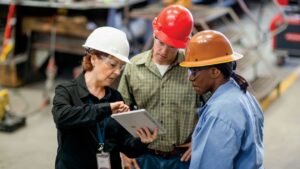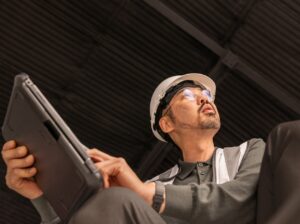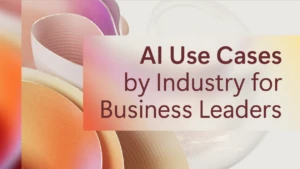The path to intelligent manufacturing
OnWindows Issue 6: Spring 2016
An era of systems of intelligence will transform the manufacturing industry and only digital businesses will prosper. That’s according to Microsoft’s Çağlayan Arkan
Inventors and entrepreneurs are using digital to leapfrog old processes, to sideline old relationships and to trade directly with customers. Like every industry, manufacturing is being disrupted and no one knows which startup will transform the way a service is performed. New Proto Labs, Airbnbs and Ubers can bubble up at any time to redefine a business model.

“The early adopters of digital transformation will likely have a head-start and not be disrupted. Enterprises that take their time to transform will suffer,” predicts Çağlayan Arkan, general manager of Worldwide Manufacturing and Resources at Microsoft. “For the first time in industrial history, it’s possible to maximize connectivity to achieve optimization at whole enterprise management. Today, a business can optimize its operations across all of its people, plants, assets and suppliers.”
An ability to provide a connected customer experience is already resulting in new business models. Automobile manufacturers are embracing new ways of serving their customers, reports Arkan: “They are essentially mobility providers offering by-the-minute vehicle rental, shared journeys and driverless vehicles.” These business models rely on real-time data about the use of vehicles and so Microsoft’s strategy for the connected vehicle – a comprehensive set of technologies from Microsoft and its partner ecosystem – includes the use of Microsoft’s secure cloud services. “Unlike with some of our rivals, Microsoft’s technology ensures that data – driver and telemetry – will remain the property of the mobility provider,” explains Arkan.
The systems of intelligence that enable smart factories and new business models is a result of more and better data, including data collected through the internet of things (IoT), of unlimited compute power and storage and of rich data platforms. “This intelligence is about when, where and how features and functions are used, which will then feed back into the innovation, design and engineering process. The result will be more efficient equipment for particular tasks and better anticipation of customer’s requirements. A connected enterprise is a customer-driven enterprise, which can reach out, up-sell, cross-sell and personalize offers in real time,” says Arkan. Analyzing data flowing from this connectivity is enabled by unlimited compute power and storage, as well as rich data platforms while new user interfaces make the results of analysis more accessible and actionable than ever before.
“There’s a long way to go to improve on current inefficiencies by creating smart factories and smart supply chains,” advises Arkan. Recent figures suggest that transportation is currently poorly utilized, sometimes as low as 25% of full capacity. “Even moving to 40-50% utilization would stop huge quantities of carbon entering the atmosphere.” He believes that the cost savings of keeping every asset productive by avoiding equipment failure and optimizing spare part availability are potentially enormous: “Every downtime minute costs the enterprise. With feedback from connectivity we can avoid failures and increase uptime.”
Arkan observes that developing these knowledge systems will also play a role in bridging a skills gap caused by engineers retiring from the workplace without sufficient numbers of professionals to replace them: “The skilled workforce and new processes able to manage an increasingly complex and disruptive period require the help of technology. Embedding compliance with internal and external factors will reduce business risk.” Microsoft’s empowering technology, available in personal and professional life, can help attract new workers to manufacturing by engaging them in exciting ways through new technologies such as 3D printing and augmented reality capabilities.
This intelligence will filter through to the production line. “We anticipate much higher levels of automation, with robots able to do both heavy duty tasks, which are often unhealthy for humans, and very sensitive tasks, such as repetitive work on circuit boards,” says Arkan. The result will be similar to the move from agriculture to manufacturing during the industrialization of the 20th century, with a significant section of the workforce reskilling with the help of the education system, to work in sectors such as health, leisure and renewable energy.
Arkan is confident about Microsoft’s contribution to this next era of intelligent manufacturing: “Microsoft’s leaders have always had a vision to change the world and it’s no different today. The other aspect of our leadership is to walk the talk – Microsoft invests US$10 billion every year to have the best people developing the most innovative portfolio of technology.”





